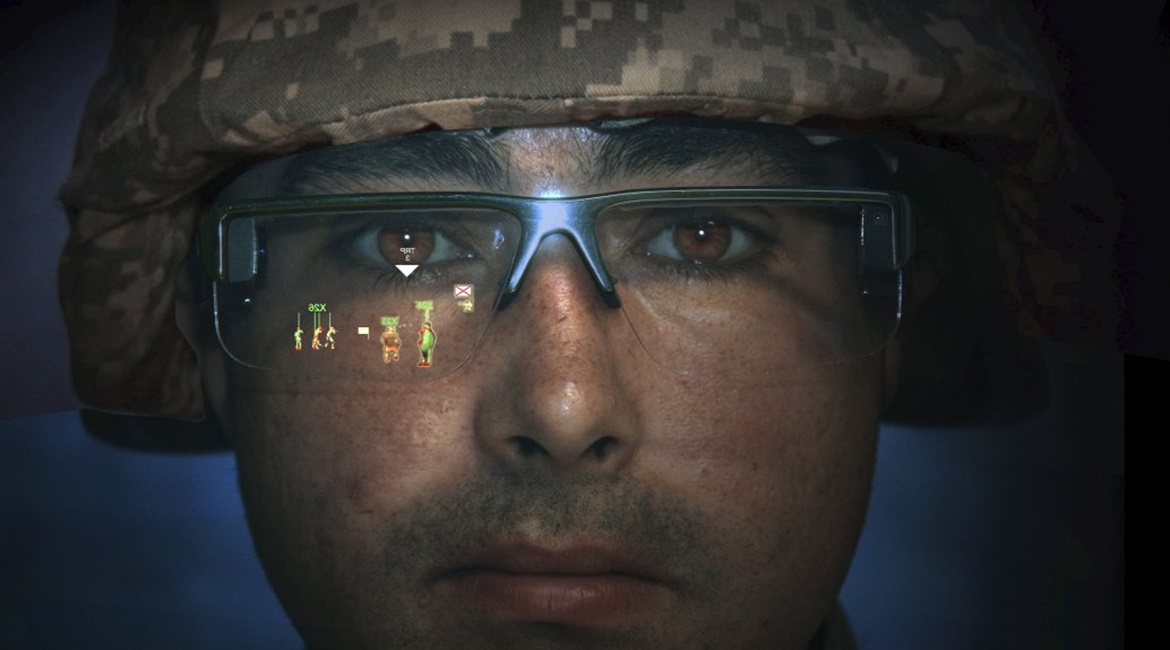
Collins Aerospace showcased its recently expanded Enhanced Reality Vision (ERV) system at the 2019 Interservice/Industry Training, Simulation and Education Conference (I/ITSEC) in Orlando in December.
Eileen Leonhardy, associate director, mission systems, optronics for Collins, told Jane’s that the ERV system was based on sensor integration technology such as head tracking and digital night vision derived from the F35 pilot helmet, which had been developed in partnership with Elbit Systems of America. It provides a situational awareness display projected into the wearer’s field of view (FoV) on a clear polycarbonate lens using an optical wave guide.
Designed principally for use by dismounted troops to provide essential tactical information while continuing to view their surroundings, it is similar in fashion to a pilot’s head-up display.
The wave guide is a polymer sandwiched between two pieces of glass, providing a diffraction grating that directs and channels light, creating a daylight-visible display.
The ERV-30, which is a helmet-mounted monocular display with a 30° FoV, was the first member of the ERV family. The latest version is the Crystal-50, which is like a pair of glasses. This has a 50° FoV with the display projected onto one of the lenses. The device also includes a camera for transmitting imagery mounted to one side and a small loudspeaker on the other.

Pictured is the Collins Aerospace Crystal-50 Enhanced Reality Vision system showing the display in one lens. (Credit: Collins Aerospace )
Looking to read the full article?
Gain unlimited access to Janes news and more...






